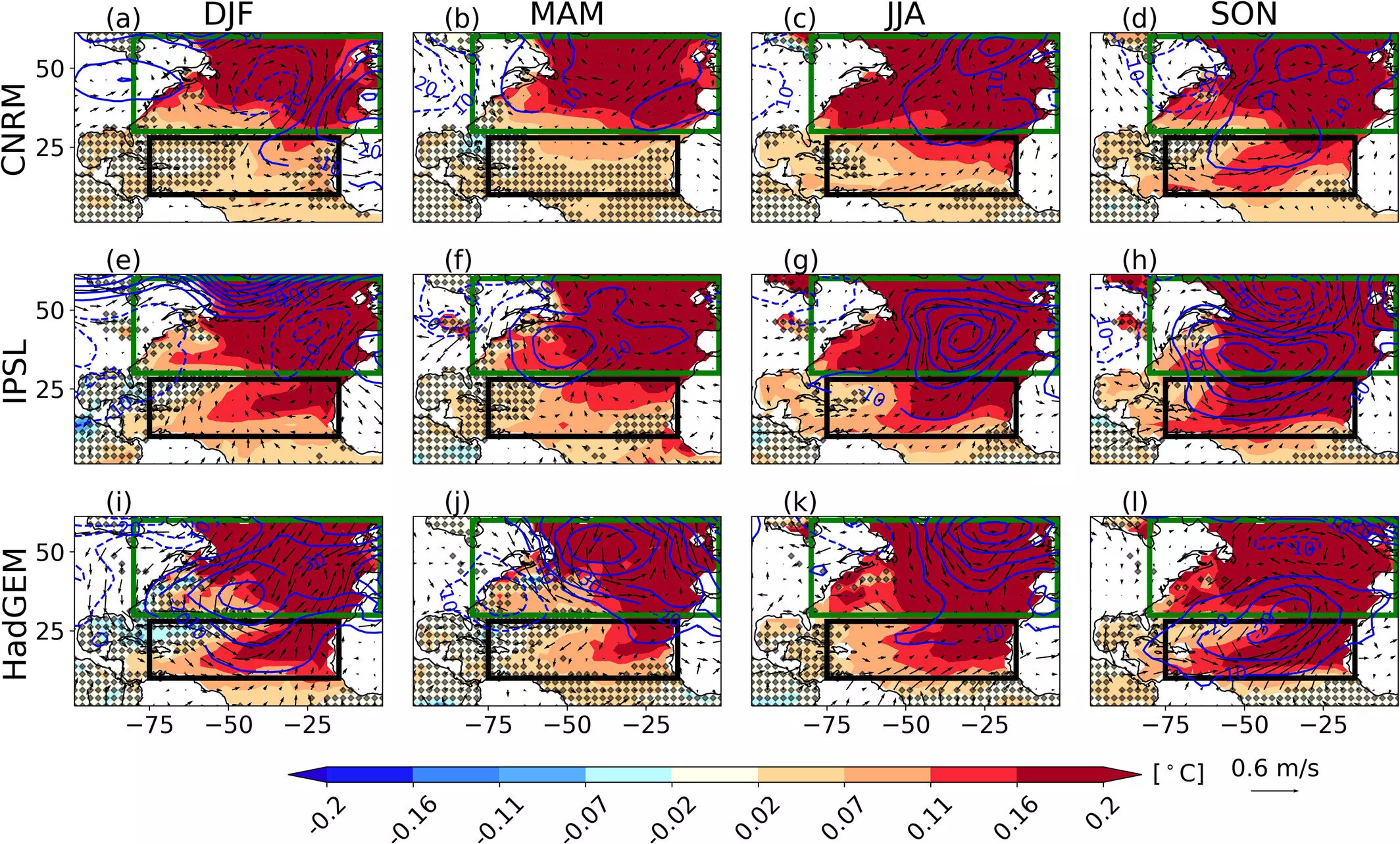Recent research has revealed significant insights into the role of tropical Atlantic Ocean dynamics in shaping global climate patterns. The intricate interactions within the upper layers of the ocean, particularly the mixed layer, have been determined to be a major driver of Atlantic Multidecadal Variability (AMV), an important climate phenomenon. This evolution of understanding holds profound implications for our perception of climate variability, especially concerning the interconnectedness of oceanic and atmospheric processes.
The Atlantic Multidecadal Variability (AMV)
The AMV is a long-term fluctuation in sea surface temperatures in the North Atlantic, which can influence weather systems hundreds of miles away. Prior assumptions posited that changes in the exchange of heat between the ocean and atmosphere were primarily responsible for these climate patterns. However, new evidence led by Dr. Balaji Senapati from the University of Reading reveals that the temperature and depth of the mixed layer—the upper section of the ocean where surface and deeper waters interact—are pivotal in determining these long-term climate variations.
This finding reflects a paradigm shift in climate science. The mixed layer’s response to external forces, chiefly the warming or cooling of the extratropical North Atlantic, reveals a feedback mechanism that exacerbates or mitigates temperature variations across the ocean and, subsequently, the globe. When the northern Atlantic warms, the trade winds weaken, affecting the shallow depth of the mixed layer, which in turn enhances warming in the tropics. This cyclical pattern not only reinforces the role of ocean processes in climate but also illustrates the delicate balance within Earth’s climate system.
Societal and Environmental Implications
Understanding these dynamics is not merely an academic exercise; it has real-world implications for climate modeling and long-range forecasting. Poor representations of upper-ocean processes in existing climate models could lead to inaccurate predictions about the AMV and its global effects. As scientists aim to refine these models, incorporating a more intricate understanding of ocean mixing processes will be essential for improving predictions regarding weather phenomena, including hurricanes and droughts that have immediate impacts on human life.
As the world grapples with climate change and its multifaceted challenges, gaining insights into natural climate variability is paramount. These findings emphasize the urgent need for robust mitigation strategies informed by improved climate models that account for the complexity of atmospheric and oceanic interactions. The interplay between the ocean’s mixed layer and climate outcomes is now recognized as a crucial component for developing effective adaptation measures to address the impacts of climate variability.
The groundbreaking study not only enhances our comprehension of the tropical Atlantic’s role in global climate variability but also underscores the intricate relationship that exists between ocean dynamics and atmospheric phenomena. As we continue to face pressing climate-related challenges, integrating this knowledge into predictive models will be essential for crafting resilient responses to an unpredictable climate future. The study not only challenges previous understandings but also opens avenues for future research aimed at navigating the complexities of Earth’s climate system more effectively.


Leave a Reply